Cisco Implementing and Operating Cisco Service Provider Network Core Technologies (350-501 SPCOR) 350-501 Exam Dumps: Updated Questions & Answers (December 2025)
A network engineer is deploying VRF on ASBR router R1. The interface must have connectivity over an MPLS VPN inter-AS Option AB network. Which configuration must the engineer apply on the router to accomplish this task?
A)

B)

C)

D)

Refer to the exhibit.

An engineer is configuring two routers to support MPLS LDP sessions between them. The R1 configuration is complete, and work has started on R2 as shown. Which additional configuration must the engineer apply to R2 to complete the task?
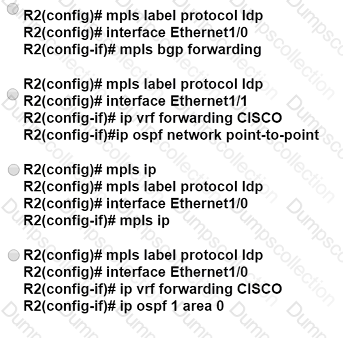
Refer to the exhibit.
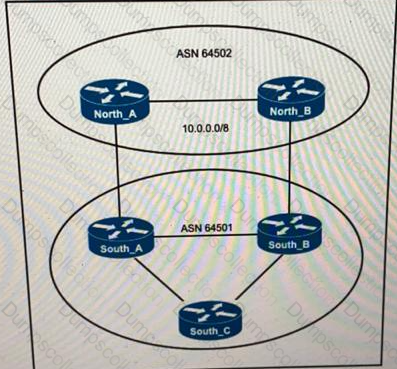
ASN 64501 currently reaches the networks under the 10.0.0.0/8 prefix via the North_B router, which is a slow backup link. The administrator of ASN 64502 wants traffic from ASN 64501 to 10.0.0.0/8 to travel via the primary link North_A. Which change to the network configuration accomplishes this task?
Drag and drop the BGP Best Path Algorithm rules from the left into the corresponding order of importance on the right.
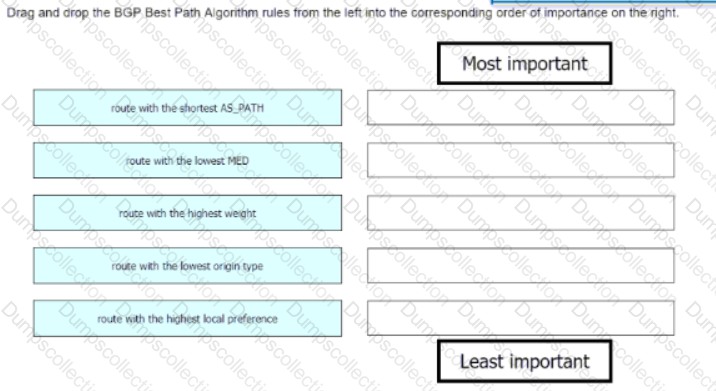
What must a network engineer consider when designing a Cisco MPLS TE solution with OSPF?
You are writing an RPL script to accept routes only from certain autonomous systems Consider this code.

If you apply this code to BGP filters, which effect does the code have on your router?
Refer to the exhibit.

An engineer is configuring router R1 for OSPFv3 as shown. Which additional configuration must be performed so that the three active interfaces on the router will advertise routes and participate in OSPF IPv6 processes?
A)
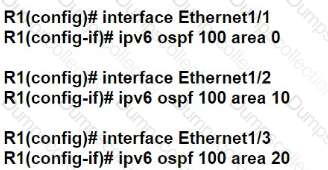
B)
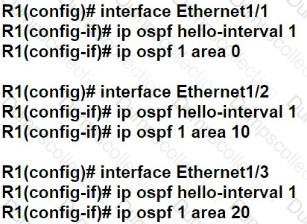
C)
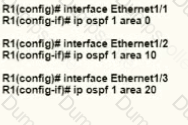
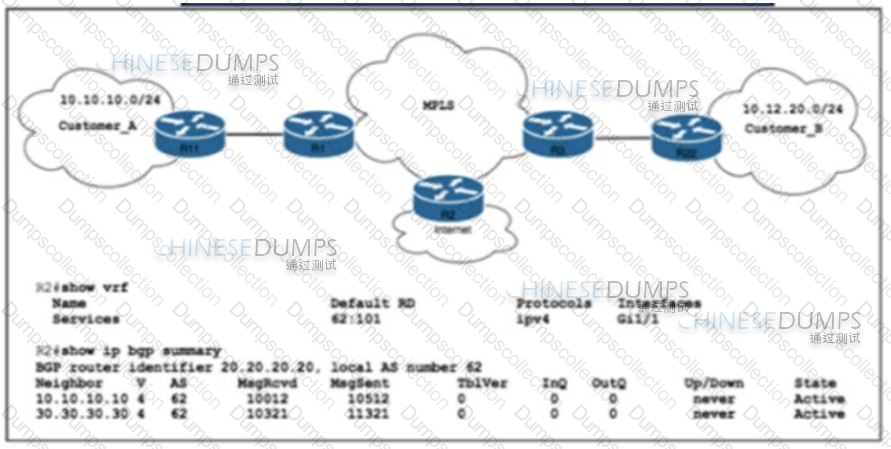
Refer to the exhibit. ISP_A is about to launch a new internet service. ISP_A is already providing MPLS VPN Layer 3 services to Customer_A and Customer_B, which are connected to ISP_A via OSPF. A network engineer completed the BGP and VRF configurations on R2 to support the new internet service. Which additional action completed the launch?
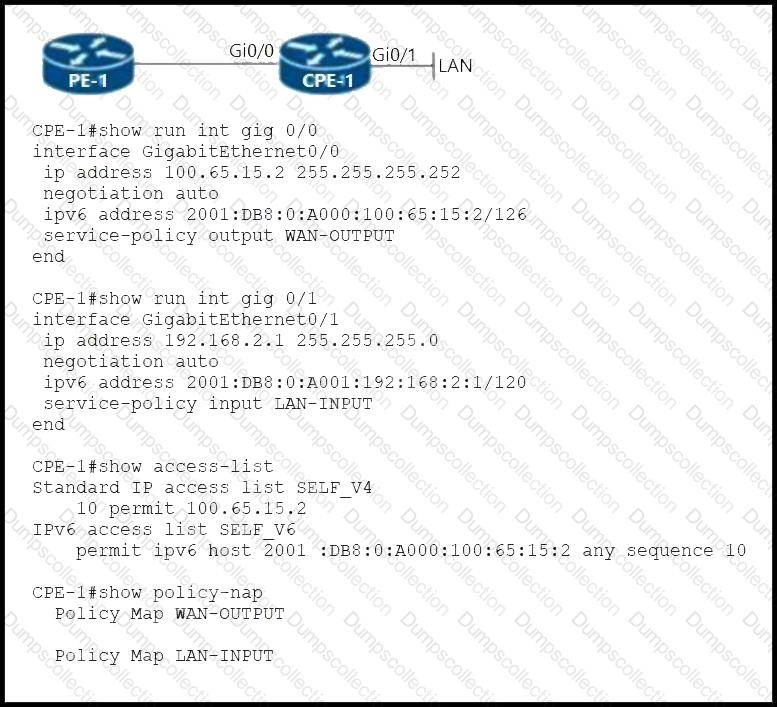
Refer to the exhibit. A network engineer configures CPE-1 for QoS with these requirements:
IPv4 and IPv6 traffic originated by the CPE-1 WAN IP address must be marked with DSCP CS3.
IPv4 LAN traffic must be marked with DSCP CS1.
IPv6 LAN traffic must be marked with DSCP default.
Which configuration must the engineer implement on CPE-1?
What causes multicast traffic to permanently stay on the shared tree and not switch to the source tree?


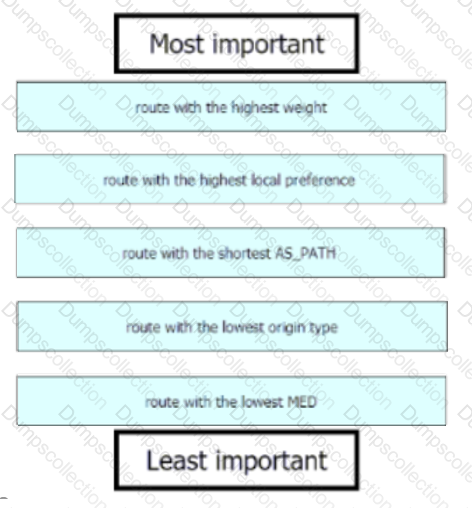 Diagram
Description automatically generated
Diagram
Description automatically generated